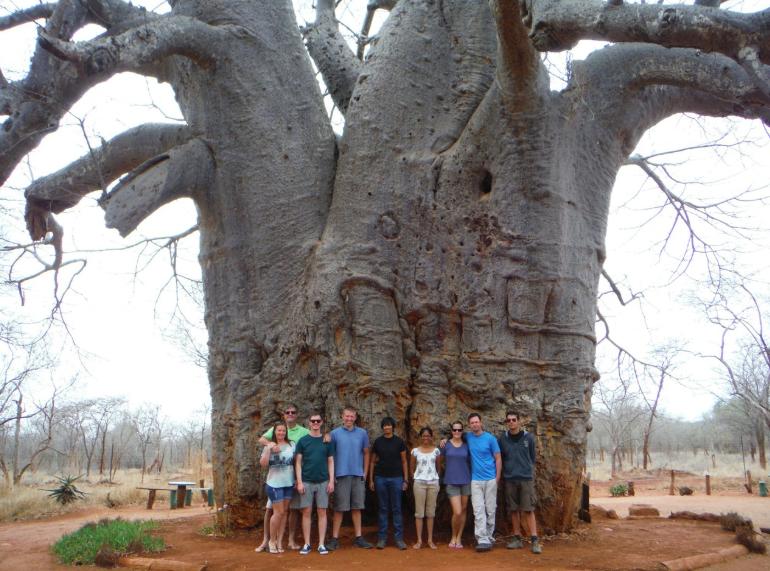A Giant in the Heart of the Savannah
In the blistering heat of the African savanna, where the land cracks under the relentless sun, rises a natural wonder so awe-inspiring it can be seen from miles away — the baobab. Towering up to 100 feet (30 meters) tall, with trunks so wide that some exceed 33 feet (10 meters) in diameter, the baobab is more fortress than tree. And it’s not just size that makes it remarkable — it’s the fact that some of these giants have been alive for over 2,000 years.

Nature’s Living Reservoir
The baobab’s most extraordinary feature lies hidden within its massive trunk. Beneath the thick bark is a sponge-like wood capable of storing thousands of gallons of water. This built-in reservoir allows the tree to survive even the harshest droughts, feeding its own leaves and fruit when everything else around it withers. In times of scarcity, it becomes a lifeline for animals and people alike — offering hydration when rivers run dry and the ground turns to dust.

Every Part Has a Purpose
The baobab isn’t just a tree — it’s an entire supermarket, pharmacy, and shelter rolled into one:
-
Fruit — Packed with vitamin C, calcium, magnesium, and antioxidants, its tangy pulp is dried, powdered, and used to make health-boosting drinks and remedies.
-
Bark — The fibers are turned into ropes, baskets, fishing nets, and even cloth.
-
Leaves — Eaten fresh, added to soups, or used medicinally to reduce fever and inflammation.
-
Seeds — Pressed into nutrient-rich oil high in healthy fatty acids.
Even when it dies, a baobab continues to serve — its hollowed trunk becomes a shelter for people, a storehouse for grain, or a refuge for wildlife.

The Myths and the Legends
The baobab is not just a biological marvel — it’s a sacred figure in African folklore. One famous legend says that when God planted the trees, the baobab grew so proud that it angered Him. As punishment, it was uprooted and replanted upside down — which is why its bare branches resemble roots reaching into the sky.
For centuries, villages have formed around these trees, using their shade for meetings, ceremonies, and even wedding celebrations. Beneath their branches, history has been written.
Ancient Wisdom Meets Modern Science
What indigenous communities have known for generations, modern science now confirms — the baobab is a powerhouse of nutrition and resilience. Its fruit strengthens immunity, aids digestion, prevents dehydration, and is even believed to slow aging. Demand for baobab products is booming worldwide, with exports steadily growing each year.

A Survivor Through the Ages
Baobabs are masters of adaptation. In the dry season, they shed their leaves to conserve water, then burst back to life with the rains. They have withstood centuries of droughts, fires, and even attempts to cut them down. Some have been alive since before the Roman Empire, silently watching the rise and fall of empires and the passing of countless human generations.

The Symbol We Need Today
In an age where climate change threatens ecosystems across the globe, the baobab stands as a towering reminder of endurance, balance, and mutual respect between people and nature. Its lesson is simple yet profound: survival comes not from hoarding resources, but from sharing them.
The baobab is living proof that true strength lies in adaptability — and in giving back to the world around you. Perhaps that’s why, after thousands of years, it’s still here… and still thriving.

